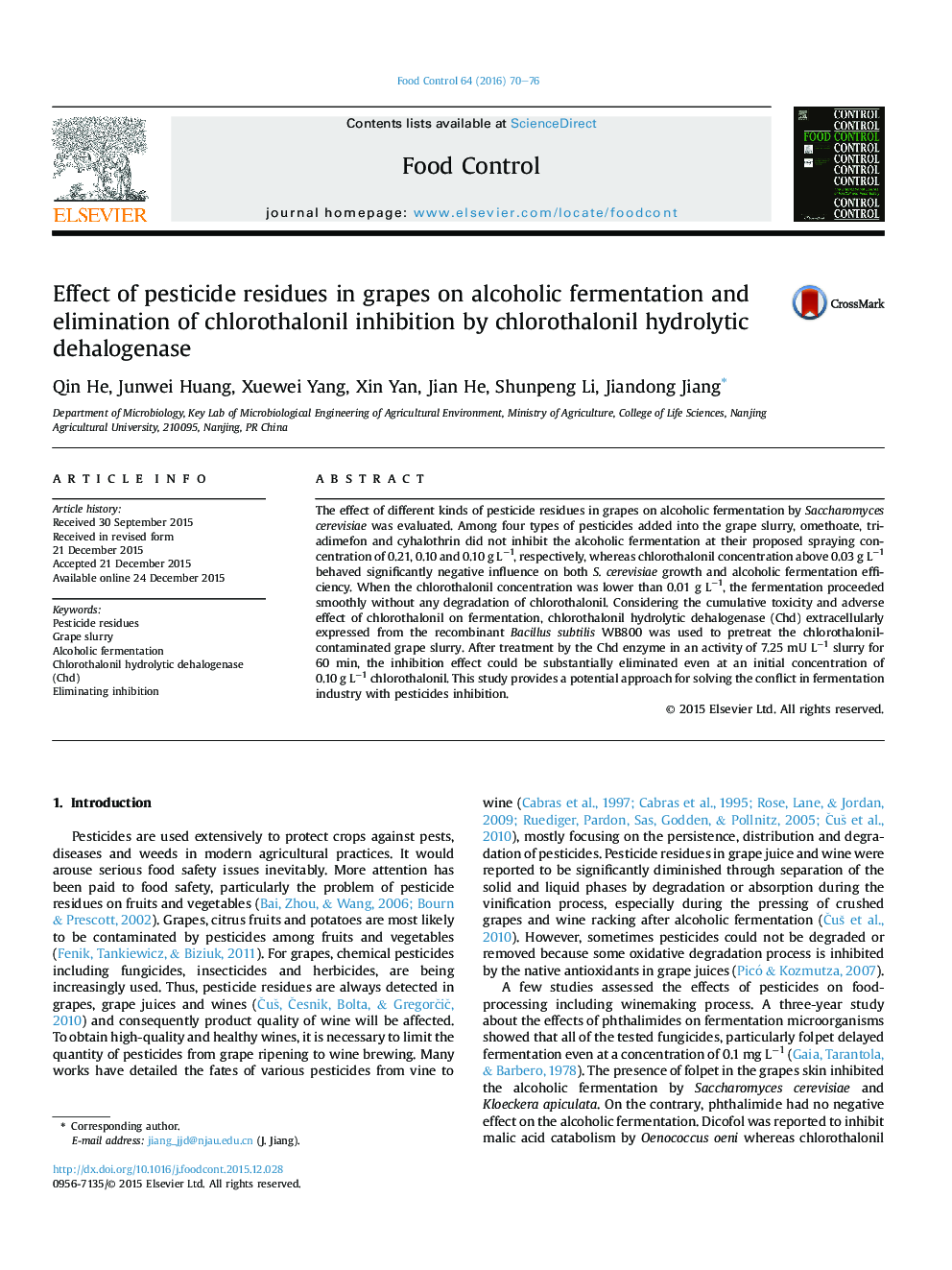| کد مقاله | کد نشریه | سال انتشار | مقاله انگلیسی | نسخه تمام متن |
|---|---|---|---|---|
| 6390160 | 1628398 | 2016 | 7 صفحه PDF | دانلود رایگان |

- Effect of various pesticide residues in grapes on alcohol fermentation was assessed.
- Chlorothalonil above 0.03 g Lâ1 significantly inhibited alcohol fermentation.
- Chlorothalonil inhibition of fermentation was eliminated by Chd enzyme treatment.
The effect of different kinds of pesticide residues in grapes on alcoholic fermentation by Saccharomyces cerevisiae was evaluated. Among four types of pesticides added into the grape slurry, omethoate, triadimefon and cyhalothrin did not inhibit the alcoholic fermentation at their proposed spraying concentration of 0.21, 0.10 and 0.10 g Lâ1, respectively, whereas chlorothalonil concentration above 0.03 g Lâ1 behaved significantly negative influence on both S. cerevisiae growth and alcoholic fermentation efficiency. When the chlorothalonil concentration was lower than 0.01 g Lâ1, the fermentation proceeded smoothly without any degradation of chlorothalonil. Considering the cumulative toxicity and adverse effect of chlorothalonil on fermentation, chlorothalonil hydrolytic dehalogenase (Chd) extracellularly expressed from the recombinant Bacillus subtilis WB800 was used to pretreat the chlorothalonil-contaminated grape slurry. After treatment by the Chd enzyme in an activity of 7.25 mU Lâ1 slurry for 60 min, the inhibition effect could be substantially eliminated even at an initial concentration of 0.10 g Lâ1 chlorothalonil. This study provides a potential approach for solving the conflict in fermentation industry with pesticides inhibition.
Journal: Food Control - Volume 64, June 2016, Pages 70-76